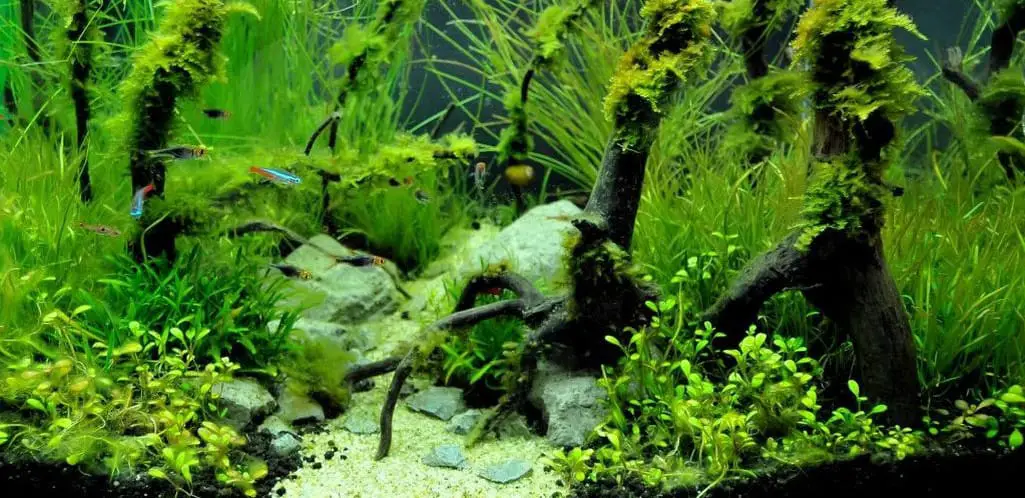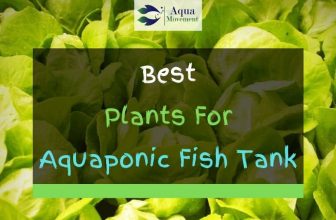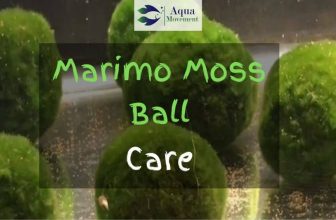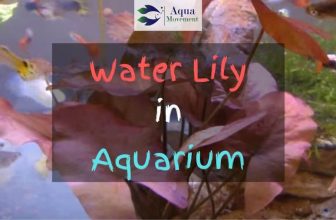Best Light Spectrum for Aquarium Plants
Aquarium plants can be a wonderful addition to any aquatic set-up. Not only can they add a real splash of color and variety to your beloved fish tank, but they can also help to create a stimulating environment for your fish, really accent their color, and even improve the overall health of the environment.
This last point is important because aquatic plants can be used to make your tank cleaner and clear by helping to prevent the buildup of harmful algae which can be really detrimental (not to mention an eyesore) to your tank.
Aquatic plants help to maintain the balance in a fish tank. They do this because aquatic plants can help to soak up the nitrates and phosphates that would otherwise go to feed the algae, thereby effectively staring out their pernicious competitors.
There is no doubt that aquarium plants can be very aesthetically pleasing and also bring a host of other benefits to your freshwater fish tank.
However, as a beginner you may be puzzled by the variety of aquatic plant lighting on offer, and wonder what is the best light spectrum for aquarium plants?
Well, you can just sit back and relax as we guide you to answer this very important question!
Table of Contents
Why do Aquatic Plants need Special Lighting?
It is no surprise that aquatic plants, like all other living creatures on our planet, need some supply of light to grow and survive. However, it is valid to wonder why do aquatic plants require their own source of lighting.
Well, many types of aquatic plant are bough small and installed in the tank before they grow. They need sufficient levels of light to be able to harvest the energy from the nutrients in the water, so that they can grow and increase their body mass.
As light levels are often depleted by the water in the tank, the ambient levels of light may simply not be enough to really allow them to reach their full potential. Thus, an artificial solution is required, which is where the best light spectrum for aquarium plants comes in.
You need to select a light spectrum that your plants will actually respond favorably too, which will allow them to grow and fill your aquascape.
Of course, there are lots of other reasons for installing aquarium lighting, such as beefing up your current set up and accenting your fish’s natural colors. But for all these purposes you must select the right spectrum for the job.
Video: “5 Things I Wish I Knew About Planted Aquarium Lighting”
What is a Light Spectrum?
First of all, it is important that the budding light purchaser understands what we are talking about when we say the light spectrum. Without getting too technical, light is a wave, except unlike water waves, it is an electromagnetic wave.
And all the different colors of light that you can see (as well as the light you can’t see), have a characteristic ‘wavelength’, which allows our eyes to differentiate between the different colors.
Thus, light sits in a ‘spectrum’, going from very high energy, short wavelength radiation to very low energy, long wavelength radiation. Visible light, i.e. the part of the spectrum that we can see, sits in a very small section in the middle of this spectrum.
Now, all LED bulbs and lights of all kind will give out many different wavelengths of light. But some will give out some wavelengths more than others.
For example, some bulbs will output mostly high energy blue light, while others will give a nice balance of all light, which we see as white light.
This is referred to as the output light spectrum of the aquarium lighting, which should be indicated on the packaging or website. This spectrum can heavily influence how your plants respond to the newly installed lighting, so it is crucial to consider it beforehand, and choose the best one.
Is Color Temperature Important?
Sometimes, one easy way to identify the light spectrum of aquarium light is by looking for the color temperature. This is related to the ‘black body temperature’ (which is a scientific principle you don’t really need to know about) of the light, which predicts what is the most common wavelength of light outputted.
If that sounds too technical, then just remember this: soft yellowish color lights have a color temperature (also called a Kelvin rating) of less than 3000 K, while blue hue light may have a color temperature of more than 5000 K.
The Kelvin temperature of the sun in full daylight is approximately 5700 K, so many people suggest mimicking this to achieve the best results, but the experts are not agreed on this point.
However, it is important to know the color temperature of your lighting if you are trying to select aquatic lights which will nicely accent the colors of either your plants or fish, so this should not be totally overlooked.
What Other Quantities Should I Look At?
When you are going to purchase the best light spectrum for aquarium plants, there are some more important parameters than the color temperature for you to look at. Two of the best examples of this are PAR and PS, which we will explain in detail.
PAR, in the wonderful world of fish tanks, stands for photosynthetic active radiation. In layman’s terms, this is the intensity of light in the narrow band of the spectrum, from 300 nm to 700 nm, on which aquatic plants and corals tend to rely heavily.
This is a crucial reading, because it indicated what is the total light energy available for the plants to withdraw, and it can be readily measured using a PAR meter in your tank, or getting an expert to do the same. In general, higher PAR numbers are better for plant growth.
However, PAR readings are not the be all and end all, and sometimes more accurate and specific measures of light efficiency are needed.
This is where PAS comes in. PAS, in this context, stands for the photosynthetic action spectrum. This is a better indicator of lighting quality, because it focuses on the specific wavelengths of light which stimulate chlorophyll A and chlorophyll B in plants, which help to activate plant growth.
This is kind of difficult to generalize, because unfortunately the PAS wavelengths are different for every species of plant, so it is necessary to consider beforehand what type of aquatic plant you want to grow, and what its PAS requirements are.
Flexibility Is Important

When you are searching for the best light spectrum for aquarium plants, you should not overestimate the need for flexibility in whatever solution you find. Although you should tailor your aquatic lighting to the type of plants you want to grow, you should also remember that you may want to cultivate other aquatic species in the future.
Therefore, it may be worth investing in a system that gives you the flexibility to change the color spectrum, hue or lighting conditions easily. Fortunately, there are many such systems on the market right now. For example, aquatic lighting rigs are available which allow you to change the color of the LEDs that are on (thereby shifting the lighting spectrum), change the light intensity, put the lights on timers and more.
Models even exist which allow you to mimic natural weather conditions and control the LEDs from an app on your phone! It has truly never been easier to incorporate flexibility in your system, so this is definitely something you should consider when making your next purchase.
What is the Best Light Spectrum for Aquarium Plants?
Unfortunately, like we have suggested already, there is no ideal one size fits all solution to aquatic lighting. Each plant (and fish species for that matter) will have their own peculiar lighting wants and needs.
However, there are some good general rules of thumb to follow. For instance, some percentage of the light absorbed by the plants is wasted, while another percentage is used in the photosynthesis process.
This is sometimes known as the ‘relative quantum efficiency’ of that particular wavelength of light.
It has long been known by scientists, that a much greater fraction of incident red light is used by plants than blue light. Blue light is just too high energy to be used by a lot of the internal chemical processes going on in the plant’s cells, so a lot of it is wasted.
On the other hand, red light is ideal, and some plants can harvest up to 75% of the incident red light.
Green light falls somewhere in the middle between red and blue light.
As a result, many aquarium specialists recommend that for general plant growing, you should have at least 50% red light in your generated light spectrum, and no more than 15% blue light at most.
This should provide the recommended levels to ensure stable, fast growth of your plants, all other things being equal.
It is important to note that the absorption of the different wavelengths of light will also vary with tank depth, so you should take this into account when positioning your aquatic plants.
There are lots of handy charts to help explain this process.
What is the Best Light Spectrum for my Aquarium Plants?
This is really the more important question, because although the guidelines offered above should provide for decent growth in most species, each aquatic plant will respond differently to light, and will have specific needs.
You should research the ideal light spectrum for your plant species before committing to a setup, and also check what other plants it thrives with and how many hours of light a day does it need. This will allow you to set your timer, which relieves a lot of the hassle of growing aquatic plants.
Easy to grow Plants
In general, there are two groups of aquatic plants.
One that is extremely picky about the intensity and color of the light it receives, and another group that is much hardier and will grow under almost all lighting.
This second group is better suited to beginners and novices, as they will not require as much care, knowledge or attention, and they are unlikely to dishearten you by dying unexpectedly.
This group contains some of the most popular species of aquatic plants, which you will find in almost all good stores or online shops.
Some notable examples from this group include guppy grass, java moss, hornwort, anubias and java fern.
All these species should thrive under low light conditions, provide a decent amount of color and backdrop, and help keep your tank’s ecosystem healthy and thriving.
Plants for more Advanced Hobbyists
The other group of aquatic plants are much more picky about the light they receive, and they simply will not survive if you do not establish the correct conditions. Hence, these plants are much more targeted to advanced hobbyists who are looking for a challenge and really want to add another dimension to their fish keeping.
Examples of demanding aquatic species include dwarf hairgrass and baby tears. These can look brilliant in full bloom, but you have to ask yourself are you willing to put in the effort?
Conclusion
As we have seen in this article, the question of what is the best light spectrum for aquarium plants has no easy answer. You need to consider what types of plants you want to grow, whether you are likely to expand your selection in the future, and of course, how much you are willing to spend!
There are a great range of lighting options on the market right now, catering for tanks of all sizes, but you must do some introspection first.
In this article we have cleared up some of the confusing terminology around light spectra, including the Kelvin rating, PAR and the all-important PAS.
We have also shown why it is important to incorporate flexibility into your setup, and given some examples of fish that can thrive even in imperfect light conditions.
Overall, choosing the best light spectrum will enable your aquatic plants to grow and thrive, which should add interest and color to your tank, as well as having knock on benefits for the cleanliness and overall health and well-being of your fish.
Thus, it is worth doing your research!




